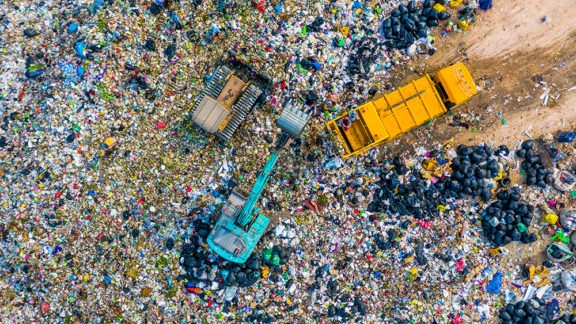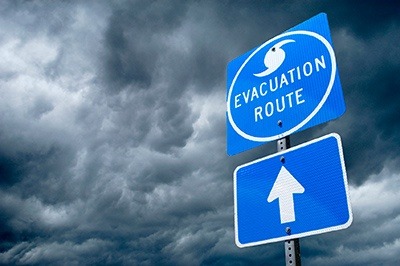For the past several years, fire chiefs and environmental compliance officers at facilities using aqueous film-forming foam (AFFF) have known that change is coming. They have observed in rapid succession regulatory and supply chain developments signaling the impending need to transition away from per- and polyfluoroalkyl substances (PFAS)-containing products.
Now, several new regulatory developments have left airports without clarity on the path forward. While there are no specific mandates from the Federal Aviation Administration (FAA) to transition away from AFFFs, the Environmental Protection Agency (EPA) has set limits for six PFAS in drinking water, and it has also finalized a rule designating two PFAS as hazardous substances under the Comprehensive Environmental Response, Compensation, and Liability Act. Other regulatory drivers are still pending. For example, the Resource Conservation and Recovery Act has not yet designated PFAS as hazardous waste, while some states have independently regulated a subset of PFAS as dangerous or hazardous waste. Meanwhile, some fluorochemical manufacturers have already announced their intent to cease production of some or all of their PFAS catalog.
But many airport AFFF users see a disconnect between requirements, supply chain shifts, and the practical implementation of an effective transition plan. They see many unknowns: Will they face liability related to EPA’s new stance on PFAS? How will the new rules impact permitting, the disposal of PFAS-contaminated waste, and vendor engagements? What new equipment will they need, and how much will it cost?
And they have little in the way of official guidance. Here at Haley & Aldrich, our PFAS experts received funding from the National Academies’ Transportation Research Board’s Airport Cooperative Research Program (ACRP) to research and create a comprehensive guide for transitioning from AFFF at airports, led by an author of this article, Tiffany Thomas, Ph.D. However, the ACRP defunded the project — leaving airport personnel without a vetted, comprehensive guidance document.

Considerations for transitioning from AFFF to PFAS-free foam
But you don’t have to navigate this changeover without guidance. Here are some of the factors that can impact planning:
- Property use and code requirements: Not all fire suppression needs require the use of AFFF to protect life and property. You can reassess current and future site uses now to determine if and where AFFF replacement systems will be necessary.
- System age and planned replacement: Some fire suppression equipment, such as aircraft rescue and firefighting vehicles (ARFFs), have planned replacement cycles. A look at your current maintenance and replacement schedules may provide a mechanism by which you can align your transition from AFFF to preplanned and budgeted capital expenditures.
- Goals for your transition — how clean is “clean”? Researchers are investigating the effectiveness of various ARFF decontamination methods, on top of the FAA-recommended single water rinse procedure, to increase the removal of residual PFAS from fire systems. The findings of these studies can help inform your plans and should be considered in light of local regulatory expectations and limitations on future fire suppression system use, discharge of PFAS-impacted replacement foams, and disposal or treatment of AFFF transition rinsate.
- Supply chain considerations: The availability of traditional AFFF formulations is in flux as manufacturing shifts away from PFAS-based products, including AFFF. Because the replacement products and related equipment will take time to procure and implement, we recommend early planning to support transition activities.
- Permitting: The disposal or treatment of PFAS-containing waste, and AFFF concentrates in particular, poses logistic and permitting challenges given the current discontinuity of regulatory guidance. Entities looking to manage their AFFF stockpiles and transition activities will have to navigate federal and local regulations, which may include special disposal or treatment permits.
- Disposal of PFAS-impacted waste: As with permitting, disposal of PFAS-containing waste may prove logistically challenging given the current regulatory landscape. There are few commercially available and vetted destructive technologies capable of treating PFAS, although some options, such as Haley & Aldrich’s destructive technology EradiFluor. However, some options (including traditional disposal methods) may have long-lasting liability implications.
Is your facility ready to transition from AFFF?
Haley & Aldrich has completed on-the-ground consultations for facilities, including Seattle-Tacoma International Airport and Paine Field International Airport in Washington state, generating tailored transition plans that support these facilities as they plan for and execute the transition away from AFFF.
Our experience developing comprehensive, individualized guides for this transition means that we’re ready to partner with all stakeholders, including fire chiefs and environmental compliance officers, to navigate the unknowns and complications and monitor developing regulatory guidance. Please contact any of the authors below to learn more.
Published: 7/3/2024
Authors

Senior Technical Specialist

Environmental Engineer




